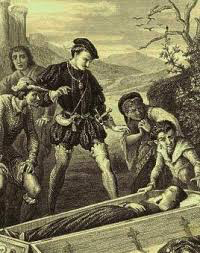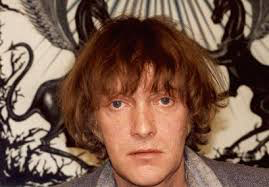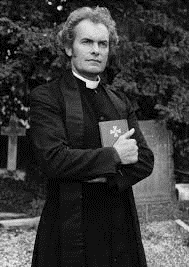Vampires cover some well-trodden fictional ground from Bram Stokers Elegant Count Dracula to teenybopper sulky but sparkly Edward and Bella of the Twilight series. Vampires have found their way into most of our consciousness one way or another.
Historically there are some interesting factual investigations into Vampirism, which could lead us to the actual existence of undead bloodsuckers that lurk amongst us. Let’s look at a few lesser-known Vampire tales, which are sure to get the blood a thumping.
We begin with the strange case of Arnold Paoel, a well-documented part of vampiric history, which comes out of the 18th Century. After moving to a Serbian village called Meduegna. Paoel would often tell the locals of how he was tormented by a Vampire while stationed in Turkey as a soldier.
He managed to survive a Vampire attack but was bitten in the process. Knowing he would need to cure himself of potentially becoming one of the undead himself, Paoel found the Vampire’s grave, ate soil from it, killed the Vampire, and smeared himself in its blood, presumably in that order.
A few years later, Arnold ended up being killed after falling from a hay cart and breaking his neck; this is when things begin to get strange. Around thirty days after his death, village locals reported seeing Arnold wandering around at night. Apparently, four people who had seen his spirit became ill and died. Forty days after his death, a decision was made to open Arnold Paoel’s grave. What the authorities found inside is supported by documentation from Austrian Physicians and Officers of the time. Arnold’s body appeared to be that of a living man; he had moved in his coffin, his hair and nails had grown, and fresh blood flowed from his eyes, nose, and ears. Deemed to be a Vampire, no chances were taken, a stake was driven through Arnold’s heart to which he apparently responded with a blood-curdling shriek as if he was still alive. His body was then burned, and his head removed. The same precautions were taken with the four supposed victims.
It would seem just a few years after these events; the Village of Meduegna again experienced another mysterious Vampiric outbreak, with thirteen people dying within a six-week period. After a thorough investigation from the Austrian government, it was concluded that not only had Arnold Paoel been snacking on the poor unsuspecting villagers but also sipping blood from the Villages Ox population. The villagers believing the Oxen had died from natural causes ended up chowing down on them unknowingly infecting themselves to join the ranks of the undead.
Bodies again were dug up and disposed of finally ending the vampiric outbreak once and for all.

On Halloween night 1968, a peculiar grave desecration took place in Tottenham Park Cemetery, North London, England. Three coffins were opened in a communal grave, and a 6ft long iron stake was impaled in the breast of a female corpse. This event has been associated with the beginning of a macabre interest in satanic cults, demons, and the supernatural, which held the attention of the British public throughout much of the early seventies.

The story of the Highgate Vampire is maybe less interesting than the now mythical decades-long rivalry of a Magician and an Exorcist that surrounds it. The story began when a local young man styled as a dark magician, David Farrant, starts making claims that he has witnessed late at night a tall strange figure hanging around Highgate Cemetery, nearby where he lives.

After speaking with some other local folks who claim to have seen a similar creature, Farrant writes a letter to the local press which receives attention, prompting another local man with an active interest in the occult, Sean Manchester to step forward and announce that he will rid the cemetery of this creature which has now somehow become categorized as a Vampire King from Romania who had been moved to London in the 18th Century by his followers. He had been awakened by satanic ceremonies taking place in the graveyard.

Manchester and Farrant do not exactly see eye to eye on whose Monster this is, how this should be handled, and particularly who should become the superstar Vampire destroyer. Farrant, photographed on the cover of a local paper with a naked woman, says he will sacrifice a cat, as a blood sacrifice is what is needed to eliminate evil. Manchester, on the other hand, claims he will rely solely on divine power. These two would-be masters of the macabre do not like each other, and Manchester announces a Vampire Hunt at Highgate cemetery on Friday the 13th March 1970, where he and Farrant will hold a magical duel to see which among them is the more powerful.
So far, so bat poop crazy, right? These theatrics only served to captivate the public curiosity, and although the magical duel never took place interest in the case of the Highgate Vampire remains to this day. The rivalry between Farrant and now Bishop Sean Manchester continued lasting decades. Despite going to jail for a short time for breaking into the Cemetery, Farrant continued to share his experiences with the supernatural being, which he never actually believed was a vampire, until his death in April 2019.
Manchester, on the other hand, lays claim to destroying the Vampire King in a one on one battle in a tomb sometime later and continues to live as a self-proclaimed exorcist and vampire hunter.
With all of these people vying to eradicate Vampires from the world once and for all. Even the most bloodthirsty of vamps might occasionally experience a crisis of confidence, feelings of loneliness, and isolation. Let’s face it; being a Vampire is probably not easy. It’s lucky then that a man named Dr. Stephen Kaplan was on hand for many years to help these anxious Nosferatu deal with any emotional problems.

A university professor, Kaplan founded the Vampire Research Center out of Queens, New York, and would regularly welcome real Vampires who would phone in on his telephone hotline, which he dubbed ‘Nightline.’ The professor who has himself tasted blood believed that Vampires are an endangered species who needed a support group.

Prolific in the paranormal community, Kaplan founded the Parapsychology Institute of America and was also famously involved in debunking the Amityville case. His studies on Vampires and Werewolves, though, were considered his forte. Kaplan passed away in 1995, but his work for Vampires hopefully helped to recognize that maybe the Undead just want a little love too.